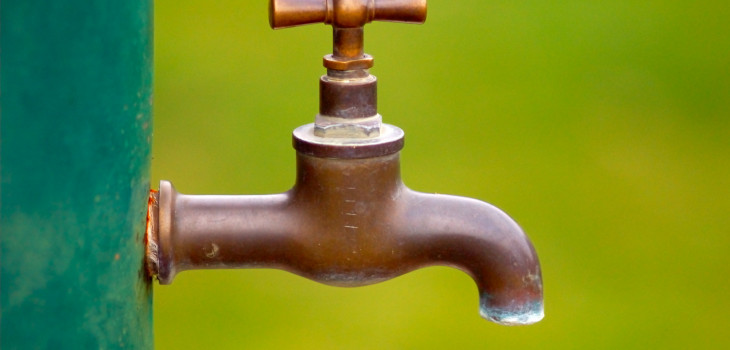South West Water: a ‘no-risk monopoly’

Devon resident Stan Beale analyses the prices that the water regulator Ofwat proposes to allow South West Water to charge over the next five years, and considers the company’s future profits and the impact on local households.
The pricing levels proposed by Ofwat for the next 5 years allow South West Water to make a profit before tax of more than a quarter of its total revenue, and more than a quarter of the bills paid by households. This is an outrageous return for a no-risk, run-of-the-mill monopoly, with assured revenues.
In the table below provided by Ofwat, projected operating costs account for about 40% to 45% of the company’s total revenue. The cost of processing each cubic meter of water is trivial, so that the operating cost incurred by South West Water for every household, irrespective of metered usage, remains essentially the same, at about £200. There is also the charge necessary to finance the investment programme which accounts for about £130 of the average household bill and, sensibly, since this charge is concerned with the infrastructure, should be borne equally by all customers. There is, on that basis, a charge due to every property, which should be included in every household bill, of about £330 simply for the provision of the necessary facilities, even before any water is drawn or a toilet flushed.
2015-16
2016-17
2017-18
2018-19
2019-20
Totals
Water (£M)
Operating costs
92.8
87.7
81.2
81.0
81.0
423.8
Investment Capital
45.7
46.6
47.7
48.8
49.7
238.5
Return on capital
44.1
44.7
45.3
45.8
46.2
226.1
Tax
6.2
6.0
5.4
4.2
3.3
25.2
Total allowed revenue
184.8
182.5
179.4
179.3
179.4
905.3
Waste Water (£M)
Operating costs
98.3
98.8
98.4
99.7
98.9
494.1
Investment Capital
77.3
78.4
79.7
81.4
83.4
400.2
Return on capital
58.5
58.5
58.4
58.4
58.6
292.4
Tax
10.6
10.0
8.6
5.8
4.3
39.4
Total allowed revenue
240.0
240.9
244.4
244.6
244.3
1,214.2
Combined Water and Waste Water Totals (£M)
Operating costs
191.1
186.5
179.6
180.7
179.9
917.9
Investment Capital
123.0
125.0
127.4
130.2
133.1
638.7
Return on capital
102.6
103.2
103.7
104.2
104.8
5 18.5
Tax
16.8
16.0
14.0
10.0
7.6
64.6
Total allowed revenue
424.8
423.4
423.8
423.9
423.7
2,119.5
Budgeted Profits
Annual profit (£M)
119.4
119.2
117.7
114.2
112.4
583.1
Percentage profit
28.1%
28.1%
27.8%
26.9%
26.5%
27.5%
Average customer bill (£)
492
488
485
482
479
Average customer profit
contribution (£)138
137
135
130
127
After return on capital and tax are included, the company’s profit amounts to more than a quarter of the total revenue. This outrageous level of profit is computed to give shareholders a return on capital as if the shareholders had provided the necessary investment capital since flotation of the company and not the customers. Given South West Water, like all the other water companies of England and Wales, is a monopoly business, a projected profit of about 5% would seem more than generous. On this basis, the South West Water average household bill need be no more than about £350 – or even less if a close look were taken at how generous the Ofwat budgets for operating costs and investment capital might be.
We do not at this stage know how the South West Water household bills through 2015-20 will be made up but we can assume, for the purpose of discussion, that the standing charge and the metered charge will not be greatly different from those for 2014-15 – approximately £55 and £5 per cubic metre (1,000 litres) respectively. The standing charge will not cover even the operating costs, let alone the investment charge as well. It necessarily follows that the remaining charges, for infrastructure costs and profits, will bear more heavily on households with higher metered water usage.
For example, a household comprising only one or two people, especially one with nobody at home during the day, might use only about 100 litres or less of water a day. At the above prices this would incur an annual bill, including the standing charge, of about £240. On the other hand, a family of (say) 6, using about 100 litres each a day, would incur an annual bill of about £1,330. These figures are, of course, by no means precise but the discrimination against the larger household, which typically will include a number of children, cannot be disputed. The smaller household will, on the figures given above, contribute only a little more than the operating costs and none at all to the excessive profits. However, the larger family, who may very well live next door, will pay the total infrastructure cost of £330 plus a further £1,000 as their contribution to profits. This discrimination unfortunately bears most heavily on families where there are several children and in particular where the family income is low.
Concerns have also been expressed that this financial pressure might, in some cases, force economies in water usage (in handwashing and general household cleanliness) that could endanger the health of the whole family. There is clearly an urgent need for a more equitable and sensible pricing structure in terms of the standing and metered charges.
Finally, the Government adds further to this unfortunate discrimination with its £50 a year contribution to South West Water household bills through the subsidy introduced in April 2013. The small household, who may even have two salaries, have their already advantaged bill reduced from £240 to £190 while the larger family household will still face a bill of about £950.
* The details given in the table are derived from the Ofwat report “Draft price control determination notice: Company specific appendix – South West Water”, in particular from the tables on pages 4, 17 and 29 (click here for the original). The figures remain unchanged but some minor items, which do not seriously affect the totals, have been omitted.
